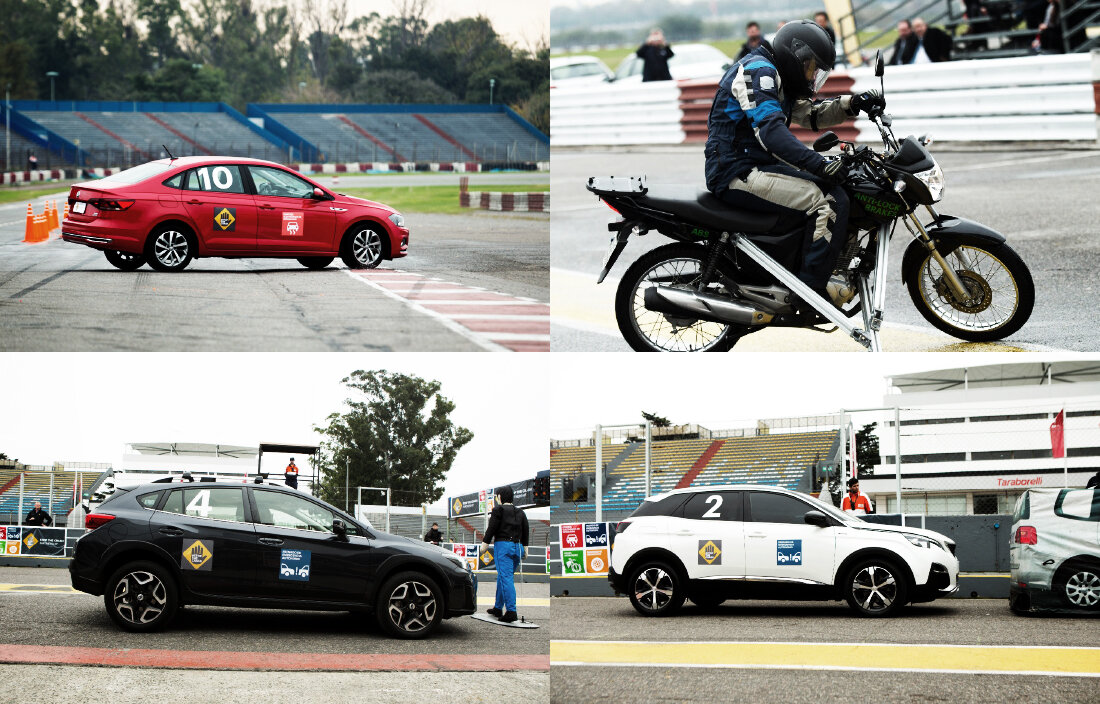#StopTheCrash: Argentina Host Of A Global Partnership For The Promotion Of Car Safety Technologies
For the first time in Argentina, the #StopTheCrash Partnership led by Global NCAP will host a live demonstration of the latest vehicle safety technologies, in support of the United Nations Global Objectives and the Decade of Action for Road Safety.
#StopTheCrash Partnership began in 2015 in Brazil and since then it has been around the globe holding events promoting the importance of active safety: Thailand, Malaysia, China, Chile and Germany. The event held in Argentina has a special focus on the implementation in the region of the technologies promoted by #StoptheCrash with demonstrations of Electronic Stability Control (ESC), Autonomous Emergency Braking (AEB) in its three variants: urban, interurban and pedestrian and Anti-lock Brakes (ABS) for motorcycles.
The partnership recently achieved a significant milestone with the adoption of a United Nations (UN) resolution, which explicitly invited members to adopt active safety systems as basic equipment for all vehicles.
#StopTheCrash Partnership achieved direct effects in markets such as China where the twelve largest manufacturers committed to a voluntary action in October 2017 to equip all their new vehicles with standard ESC from 2018. In Malaysia, the Minister of Transport along with the #StopTheCrash Partnership announced ESC mandatory in all new vehicles since 2019.
The local counterpart of Global NCAP, the New Car Assessment Programme for Latin America and the Caribbean, Latin NCAP, has been promoting since 2010, the improvement in passive and active safety of vehicles through crash tests and independent information to consumers and governments.
David Ward, Secretary General of Global NCAP and President of #StopTheCrash said:
“Technologies such as Electronic Stability Control and Autonomous Emergency Braking have the potential to save hundreds of lives every year in Argentina and at the same time save the government a lot of money. Governments need to implement United Nations regulations for Vehicle Safety and implement these technologies in new vehicles in the region as soon as possible”.
Alejandro Furas, Secretary General of Latin NCAP said:
“Just as low emission vehicles are encouraged in our countries by means of fiscal incentives, we also ask that similar incentive treatment to cars that offer ESC and a greater incentive in vehicles offering emergency braking systems. The incentives along with the independent information to the consumers provoke fast and solid changes in the market without political costs “.
Editor’s Note
Led by Global NCAP, the #STOPTHECRASH Partnership includes the ADAC, Bosch, Consumers International, Continental, Denso, ITT, Thatcham Research, Veoneer, ZF and the Towards Zero Foundation.
All are united in their shared commitment to promote advanced vehicle safety technologies in support of the UN’s Global Goals and the Decade of Action for Road Safety.
Electronic Stability Control (ESC)
ESC is the most significant advance in vehicle safety since the introduction of the seat belt and one of the most important crash avoidance systems currently available. This anti-skid technology has already helped prevent hundreds of thousands of loss of control crashes and saved tens of thousands of lives. On dry, wet, or slippery roads if the vehicle starts to skid, ESC corrects the slide by reducing engine torque and braking individual wheels to bring the vehicle back on course. The system uses sensors to continuously monitor the stability of the vehicle. When an unstable state is detected, for instance as the result of a sudden direction change, ESC responds in milliseconds and stabilises the vehicle. If the system senses oversteer (i.e. that the rear of the car is starting to drift sideways out of the turn), ESC applies the brakes to the front wheel on the outside of the turn to create a counteracting torque about the vertical axis of the vehicle. This stabilises the vehicle and turns it back onto the path intended by the driver.
Autonomous Emergency Braking (AEB)
AEB is an advanced safety technology that can help drivers avoid or mitigate collisions with other vehicles or vulnerable road users. AEB systems use forward looking radar, cameras or optical sensors or a combination of these sensors to help quickly and accurately detect impeding vehicles, pedestrians and potentially other obstacles. AEB helps provide constant monitoring of the road ahead and is designed to assist the driver by automatically applying the brakes if they do not respond in an imminent crash situation. AEB currently exists in three formats: City, Inter Urban and Pedestrian.
Anti-Lock Brakes in Motorcycles (ABS)
ABS for motorcycles prevents wheel lock-up and ensures bike stability as well as optimal deceleration while braking. ABS therefore significantly reduces the risk of falling and reduces stopping distance. On a motorcycle fitted with an antilock braking system, the ABS control unit constantly monitors the speed of the wheels using wheel-speed sensors. If a wheel threatens to lock during hard braking or on slippery roads, the antilock braking system regulates the braking pressure in a targeted manner, thereby ensuring optimum braking. In this way, the driving stability and manoeuvrability of the motorcycle is maintained, even where there are adverse driving conditions such as sand, loose chippings or water. This significantly reduces the risk of a brake-induced fall, and usually shortens the braking distance. Depending on the model, the motorcyclists can recognize that the ABS has kicked in through a gentle pulsing on the hand and foot brake levers.





